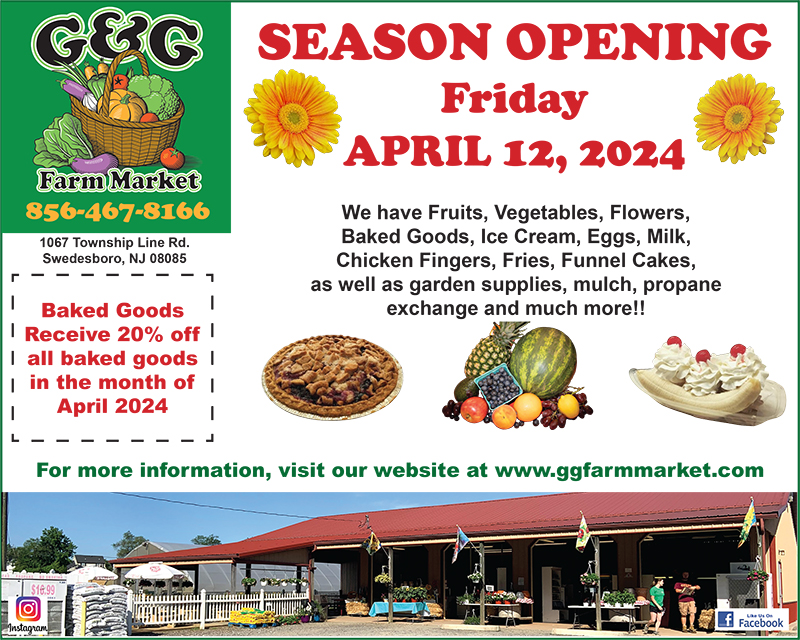By Jean Redstone
Oddly, when Pamela Thompson invited her new friend Marley to her Mullica Hill home one of the first items she bought to make him comfortable was peppermint oil. For the furniture, of course. And vanilla and orange extracts, though she wouldn’t be baking for him. The scents turned out to be a perfect welcome…
But neither Thompson’s story nor Marley’s begins with a bag of aromatic scents.

It begins with the Gloucester County Animal Shelter where lots of touching stories start. The shelter, on Delsea Drive in Clayton, just celebrated its 25th anniversary Oct. 3. Coincidentally, the American Humane Association has named October Adopt-A-Dog Month. (June, by the way, was Adopt-A-Cat month, and hopefully, you did.)
Whether it’s a dog, a cat, a bunny, guinea pig, iguana, horse, chicken or turtle, the shelter’s business is finding good homes with good people for the animals filling the cages behind the office. Those animals, all with stories they can’t tell us, would like a good life with those good people and good homes.
To find these homes and folks, the shelter adopts out animals directly and also sends them to rescue organizations with networks of contacts and budgets for advertising and which can keep an animal until a home is found.
An animal at the shelter that does not find a home or go to a rescue network is sooner or later killed. Room must be made for the animals coming in every day, found neglected, or wandering, or abused, or surrendered by owners no longer able to keep them. There are only so many cages, only so much county funding for necessities, medicines, salaries, utilities and upkeep.
Last year, according to statistics from William Lombardi, Director of the Gloucester County Animal Shelter, the shelter took in 1,200 dogs, of which 28 percent were euthanized. The rest were reclaimed by their owners, adopted out, or sent to rescue organizations. For cats, the outlook last year was even grimmer. Of the 2,657 cats impounded, a staggering 69 percent had to be euthanized.
But one of the major components operating at the animal shelter that greatly lowers the number of animals euthanized is a dedicated force of volunteers, said Lombardi. “We have volunteers from (throughout) the area, both working at the shelter and as foster parents to help us extend the stay of an animal until it gets adopted. We couldn’t do what, or as much as we do without our volunteers.”
In charge of that dedicated cadre of volunteers is Judi Hibbs, the Volunteer Coordinator for the shelter. She has more than a decade’s experience at the shelter and more than 100 volunteers working on behalf of the animals. “We are always in need of volunteers and foster parents,” Hibbs said, adding she currently has 100 part-time volunteers and from 15 to 20 foster homes. “It’s harder to come by the foster parents,” she said. “It takes up more time and more effort, but it’s also more rewarding.”
Volunteers receive orientation, training and, for foster homes, all expenses of the animal paid. Hibbs said her workers help in the office, with people coming to adopt, with cleaning cages and other facilities, with exercising and socializing the animals (yes, this can include cuddling kittens and puppies) and answering phones.
Foster parents are needed for animals with special requirement. “We try to foster a sick animal, where the shelter is just too noisy for a comfortable recovery, or puppies that need to be socialized to people, pets, or animals in need of some training to make them more adoptable. And we offer free classes with a dog trainer,” Hibbs said. “Every animal we save is one less animal put to sleep,” she added.
The success rate of the shelter from tactics such as expanding volunteer efforts has paid off, according to Hibbs. “I can tell you that 16 years ago we took in about 9,000 animals and last year it was about 5,000,” she said. She attributes that decline to “our work in public education, use of rescue organizations, our spaying and neutering policy – all of which the volunteers help out with.”
And that’s who Pamela Thompson is. She is a foster parent volunteer as well as a part-timer (and she works a full-time job as a quality-control manager and a part-time job as an adjunct professor in biology and food science at Drexel University, Philadelphia.)
As a child, she said, “I wanted to be a veterinarian.” So in high school she worked part-time at an animal hospital in Cranbury. It cured her of wanting a veterinary career. “I watched an older dog, a sick dog, being put to sleep and it tore me to pieces,” Thompson said. “I couldn’t wrap my head around it but it was a turning point and I knew I couldn’t be a vet.”
But she still loved animals. In 2008 she and her husband, Israel, wanted to get a dog and she went to the animal shelter alone to look around. “I had it in my head all the dogs were going to be pit bulls. But instead, there were tons of different dogs, mixes, big dogs, small dogs and this gorgeous long-haired dog that reminded me of a border collie.”
You don’t take an animal straight home from the county animal shelter. There’s an application process which can take from three to five days of processing before you are approved. When the Thompsons went back, newly approved, to get the “border collie”, it was gone.
“We have to be first-come first-served,” Hibbs explained. “We can’t put a hold on a pet and wait for you.”
The collie was gone but a bigger, shorter-haired, just as beautiful dog was waiting adoption. “Judi introduced us to ‘Ghost’, a 10-month-old Weimaraner. He’s been with us ever since. He’s still as playful as he was as a puppy. He’s my love,” Thompson said.
He was a “love” and the start of path for her, Thompson said. “I wanted more dogs. I wanted a playmate for Ghost.” So Thompson became a foster parent to a Weimaraner she noticed on a Weimaraner rescue organization’s online site. She took Marley into her home.
“Marley was blind,” Thompson explained, “and I lived closer to an eye specialist than did his current fosters. So we took him in. It just made sense.”
Remember the peppermint oil and the other aromas? It was a trick to acclimate Marley. “He couldn’t see, but he’s a dog. He can smell. I marked the upstairs steps with vanilla scent, the hazards in the rooms like chairs or the sofa with peppermint, and the door to outside with orange,” Thompson explained.
“Marley didn’t know he was blind, but he knew the smells very quickly. We only had to refresh the scents twice and Marley knew his way around,” Thompson said.
The specialist could not restore Marley’s sight but in short order Ghost seemed to figure out Marley’s state of mind. The two played together happily, Thompson said. “They had a form of ‘tag’ where Marley stayed in the middle of the floor and Ghost would run around him. Whenever he stopped, Marley would turn toward him and bark.” In other words, they invented the game of Bark.
Marley found a home with adoptive parents in Pittsburgh six weeks after Thompson took him in. “I cried my eyes out when Marley left. I kept thinking he doesn’t know why he’s leaving for somewhere else again. It’s not easy. I love them all so much but I know I can help another animal and this one is going to a great home.”
Thompson continued fostering, bringing Monty, the sharpei mix, home from the county shelter and sending him to a new family two months later. “I have fostered since 2008. We both work and sometimes you can’t add another dog to the household, but fostering you know is temporary. If we’re going on vacation we take our names off the list.”
She has an answer for why she continues to foster. “It’s because people still abuse animals, still abandon them, and still neglect them. (People) have a mutual relationship with animals. They’re here for me as much as I’m there for them.”
 If Pamela Thompson is a lover of dogs, Tana Sammons, also of Mullica Hill, calls herself a “cat person all my life” and proves it. “We have had 125 cats and kittens come here,” she said, pleased to know the number. “I started fostering cats in 2003.”
If Pamela Thompson is a lover of dogs, Tana Sammons, also of Mullica Hill, calls herself a “cat person all my life” and proves it. “We have had 125 cats and kittens come here,” she said, pleased to know the number. “I started fostering cats in 2003.”
She also adopts. “I have 10 cats of my own, all but two from the shelter.” Sammons said. “I started by volunteering at the adoption center at the Pet Smart.” She explained that the county animal shelter has an agreement with two area Pet Smart stores, Washington Township and Mantua, where animals available for adoption can be showcased at certain times of the day and week. Applications are taken and questions answered by volunteers, who bring the animals to the stores, clean cages, monitor interactions and various other duties.
“My husband and I both love cats,” Sammons said. “He’s the reason we have as many as we do. His slogan is ‘What’s one more?’ “ Sammons began fostering cats and, especially, kittens after learning that kittens in a shelter often, and quickly, can become ill from the airborne pathogens. “You cannot get rid of airborne disease so they try to get kittens to foster parents as soon as possible,” Sammons said.
Fostering with Sammons was a very lucky turn for Blossom, a 2-year-old cat within two weeks of giving birth when Sammons took her home. “She was scraggly, skinny, missing hair in spots and, until she arrived at the shelter, alone. The vet thought the missing hair was from the stress of pregnancy.
“But after she birthed, she just bloomed. She got a plush, soft fur and she just fit right in to the house. I kept her because she bonded with another cat I had and I didn’t want to break that up,” Sammons added.
“I find it very rewarding to see the adoption process (at Pet Smart stores). I get to talk to people looking to adopt. They have a lot of questions and you want the right cat for the person and family.
“But to tell you the truth,” Sammons said, “it’s the cat that usually picks the person. Someone will look in the window and say, ‘I want that one.’ Then I say, fine, but let’s go inside and meet the cat. Then a different cat will come up to them and sit on their lap, for instance, and that’s it. They go home with it.”
The shelter works with local veterinarians, such as Delaware Valley Animal Hospital, Swedesboro Animal Hospital, and Saint Francis Veterinary Center. The latter has the spay/neuter contract with the shelter, a service that was formerly filled by Delaware Valley Animal Hospital. (DVAH).
One of the veterinary technicians at DVAH, Val, (who did not want her full name used) also volunteers occasionally at the shelter. “I clean cages, walk dogs, play with kittens, take animals out and hold them,” she said.
As a professional in the field, Val knows the value of the volunteer work. “I really think the socialization especially is a most valuable aspect, helping animals relate to people, particularly the ones who haven’t been handled frequently or well,” she said. “The more socialized a (potential) pet is, the easier it is to adopt out. When a dog looks happy to see people, people can make a connection with it. It’s not crying or barking.”
Her position is echoed in her boss‘s philosophy. Dr. Steven Milden, VMD., includes the county shelter as an alternative when talking to clients about what dog, cat, etc. they should buy.
“At the shelter, you are taking an animal that otherwise will not have a life,” he points out. “And by volunteering, you can get your animal fix without having to own the animal, if that’s easier for your situation.”
He said he sometimes mentions to a client mourning the loss of a pet that volunteering might be a form of helping in grief. “We encourage them to consider, seeking out other interaction with animals.”
Val, who has three adopted dogs of her own, knows from her perspective that volunteer service is very valuable, and sometimes very hard. She spoke for all the volunteers she knows.
“You can’t save them all. You can’t bring every one home. So it has to be enough to help the ones that are there. You do your best to make life a little better for each one, even if it’s just a clean blanket or a 10-minute walk in the yard.
“We have to do right by our animals. If we’re going to domesticate them and they’re dependent on us, we have to take care of them.
“Because it’s the right thing.”












